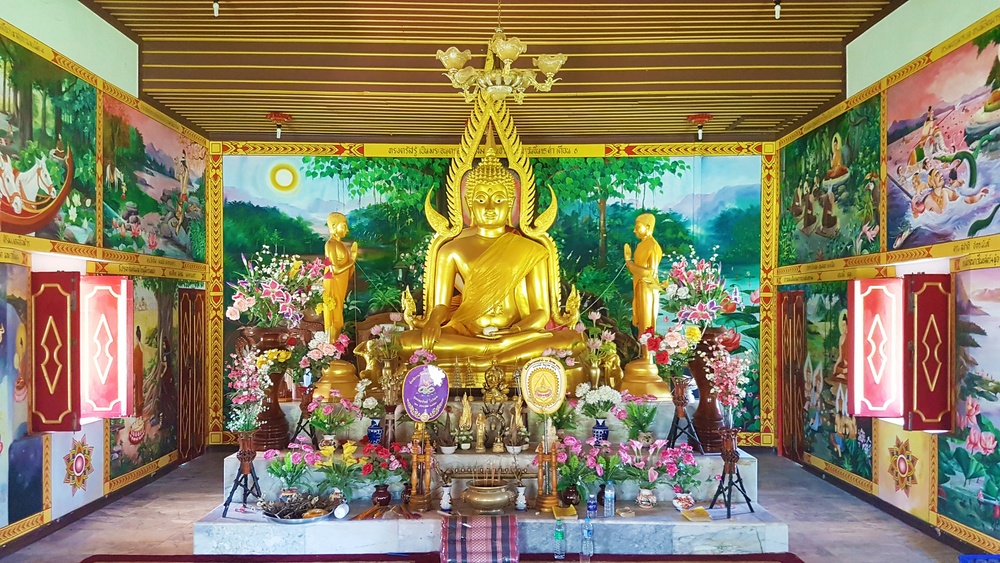Buddhist Festivals in India: A Spiritual Celebration of Peace and Enlightenment
India, the birthplace of Buddhism, is home to many sacred festivals that reflect the religion’s core values of peace, compassion, and enlightenment. Buddhist festivals in India are not just religious observances but vibrant cultural experiences that bring together devotees, monks, and travelers from around the world. Rooted in centuries-old traditions and often held at sites of historical and spiritual significance, these festivals offer a glimpse into the deep philosophical and cultural heritage of Buddhism.
Whether you’re a spiritual seeker, history lover, or curious traveler, exploring Buddhist festivals in India is a unique way to connect with the teachings of the Buddha while witnessing the diversity of rituals and regional traditions.
1. Buddha Purnima: Celebrating the Birth, Enlightenment, and Nirvana of the Buddha
One of the most significant Buddhist festivals in India is Buddha Purnima, also known as Vesak or Buddha Jayanti. It commemorates the birth, enlightenment, and passing away (Mahaparinirvana) of Gautama Buddha — all believed to have occurred on the full moon day of the Vaisakha month (April–May).
The most prominent celebrations take place at Bodh Gaya in Bihar, the place where the Buddha attained enlightenment under the Bodhi Tree. Devotees gather at monasteries and temples to offer prayers, light candles, chant Buddhist scriptures, and engage in acts of kindness and charity. The atmosphere is one of deep devotion and spiritual reflection.
Other important locations for Buddha Purnima celebrations include Sarnath, where the Buddha gave his first sermon, and Kushinagar, where he attained Mahaparinirvana.
2. Losar Festival: Tibetan New Year in Ladakh and Sikkim
Losar, the Tibetan New Year, is one of the most colorful Buddhist festivals in India, especially celebrated in regions with a strong Tibetan influence such as Ladakh, Sikkim, and Arunachal Pradesh.
Usually observed in February or March, the festival lasts for several days and includes prayers, dances, folk music, and elaborate rituals at monasteries like Hemis, Thiksey, and Rumtek. The Cham dances, performed by monks in elaborate masks and costumes, are a major highlight. These ritual dances depict the triumph of good over evil and serve as a spiritual cleansing before the start of the new year.
Losar is not just a festive occasion; it’s also a deeply spiritual one, where people seek blessings for prosperity, peace, and good health.
3. Hemis Festival: A Grand Tribute to Guru Padmasambhava
Held annually in June or July at the famous Hemis Monastery in Ladakh, the Hemis Festival honors Guru Padmasambhava, who is believed to have brought Vajrayana Buddhism to the Himalayan region in the 8th century.
This is one of the grandest Buddhist festivals in India, attracting thousands of locals and tourists. The two-day event is marked by vibrant Cham dances, traditional music, and masked performances that represent various deities and spiritual themes. The monastery courtyard becomes a vibrant stage showcasing Ladakhi culture, devotion, and the Buddhist philosophy of compassion and harmony.
4. Kalachakra Festival: A Rare Spiritual Gathering
The Kalachakra Festival is a special event in Tibetan Buddhism that focuses on world peace and spiritual awakening. Presided over by the Dalai Lama when held in India, this rare festival involves complex rituals and teachings centered around the Kalachakra Tantra — one of the most advanced meditative practices in Vajrayana Buddhism.
Though not held annually, when the Kalachakra is organized in India — often in Bodh Gaya — it draws thousands of international devotees, monks, and tourists. The multi-day festival includes empowerment ceremonies, philosophical teachings, and the creation of an intricate sand mandala, which is later dismantled to symbolize the impermanence of life.
5. Uposatha: A Day for Reflection and Renewal
While not a grand public festival, Uposatha is a significant observance for practicing Buddhists in India. Held on new moon, full moon, and quarter moon days, Uposatha is a time for introspection, meditation, and recommitment to the Buddhist precepts.
Monasteries across India, particularly in regions like Sikkim, Himachal Pradesh, and Maharashtra, see increased activity on Uposatha days. Lay followers participate by visiting monasteries, listening to Dhamma talks, making offerings, and observing moral precepts. It’s a quieter, yet deeply meaningful spiritual practice that highlights the internal, meditative side of Buddhism.
Spiritual Tourism and Cultural Heritage
The increasing interest in spiritual tourism has made Buddhist festivals in India an important aspect of travel planning for pilgrims and culturally inclined tourists. These festivals are often held in historically rich and naturally beautiful settings — from the serene hills of Sikkim and Himachal to the plains of Bihar and Uttar Pradesh — offering travelers a blend of spiritual growth and cultural immersion.
Tour operators now offer specialized packages that align with major Buddhist festivals, combining temple visits, heritage walks, meditation retreats, and local cultural experiences.
Conclusion: A Journey into Inner Peace and Cultural Splendor
Buddhist festivals in India are more than just events on a calendar — they are profound spiritual experiences that reflect the timeless values of Buddhism. From the grandeur of Buddha Purnima at Bodh Gaya to the masked dances of the Hemis Festival in Ladakh, each festival is a reminder of the path toward inner peace, compassion, and enlightenment.
For anyone seeking a deeper connection with Buddhist philosophy, or simply wishing to witness India’s diverse spiritual traditions, participating in or witnessing these festivals can be a life-changing experience. In a world often marked by stress and conflict, these festivals offer a space for reflection, renewal, and peace — both within and without.


